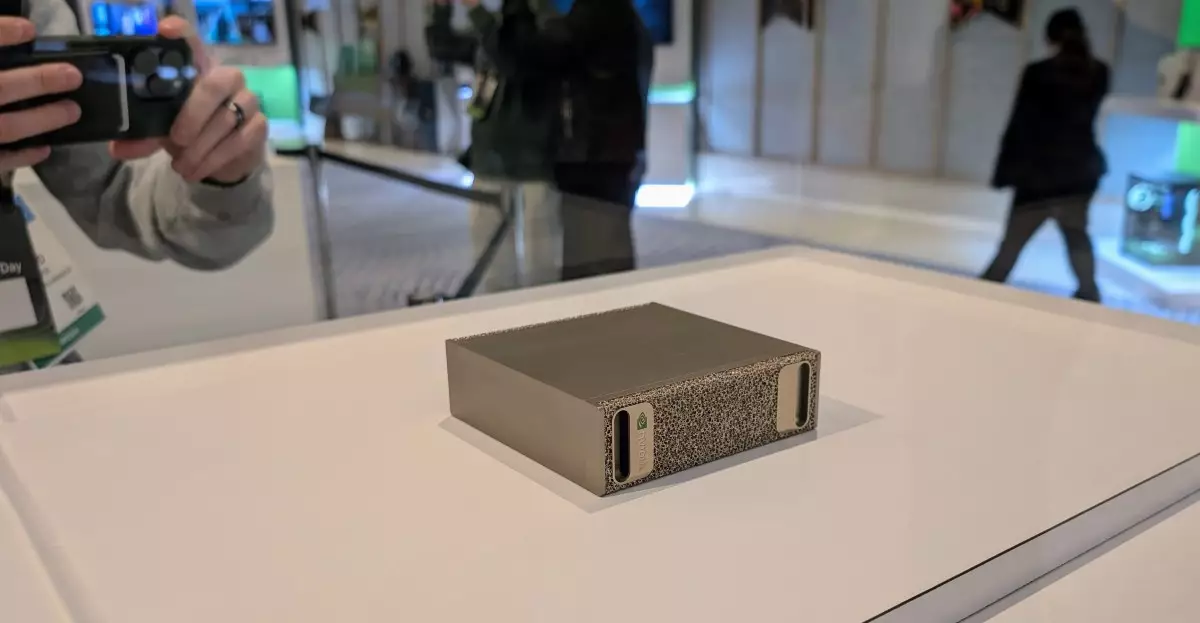In an era where artificial intelligence is rapidly reshaping industries, brands like Asus, Dell, and HP are stepping up to the plate, introducing their unique takes on personal AI supercomputers. With the backing of Nvidia’s Grace Blackwell platform, these tech giants promise to redefine the boundaries of computing, delivering unprecedented power to everyday users. Nvidia has unveiled its vision of “personal AI supercomputers,” a term that is gaining traction among tech enthusiasts and professionals alike. The notion of having miniaturized yet robust computing devices capable of extraordinary tasks opens a myriad of possibilities.
This shift isn’t just about better speeds or improved processing power; it’s about democratizing access to AI capabilities. For years, supercomputers were the realm of research institutions and large enterprises, but now, with manufacturers building their versions of Nvidia’s advanced architecture, the promise of AI is trickling down to individual consumers and smaller companies.
Innovative Designs for Every User
Among the frontrunners in this development is Asus, which has introduced the Ascent GX10—a mini PC boasting the same impressive processing capabilities as Nvidia’s DGX Spark model. The Ascent GX10 achieves 1,000 AI TOPS and 128GB of unified memory, indicating that it is not just about compact size but substantial computing capability as well. Its consumer-friendly design contrasts with Nvidia’s more industrial look, illustrating Asus’s understanding of the need for aesthetics in technology.
Conversely, HP has launched its ZGX Nano AI Station G1n, which seems to take a more premium approach with its sleek design, suitable for those who want their tech to look as advanced as it performs. This reflects a growing recognition that modern computing devices must also appeal to the eyes, not just the intellect. Such differentiation in physical appeal and functionality caters to a diverse audience, from casual users to professionals who require robust hardware.
Dell’s Blockbuster Strategy
Dell is not to be outdone, revealing its “Dell Pro Max With GB10” series. Branding plays a pivotal role in this announcement; the name itself suggests an elite level of performance. However, its unassuming black box design raises some eyebrows. While aesthetics might be less critical for server rack installations, user ergonomics and visual appeal are still vital for desktop setups. The configuration of the power button on the top, particularly in a server context, hints at potential usability challenges that Dell might need to address for their buyers.
Moreover, the introduction of the Dell Pro Max with GB300, boasting astonishing 20 petaflops of AI performance, signals Dell’s ambition to compete at the high end of the market. Still, the anticipated release window around summer 2025 suggests a long wait for eager customers, especially as Nvidia’s DGX Spark, priced at an enticing $3,000, aims to capture a substantial market share sooner.
The Emerging Competitors
While Asus, Dell, and HP grab headlines, competitors like Lenovo are poised to enter the fray. Although Lenovo has yet to reveal specifics, the notion of more players joining the field indicates a thriving marketplace keen on innovation. The infusion of various designs and functionalities will push not just performance standards but also the pricing dynamics in this segment. The potential for price wars could further lower barriers for widespread adoption of AI supercomputing, making it accessible to smaller entities previously priced out from such technologies.
Nvidia’s decision to invite third-party manufacturers to create their adaptations underlines its commitment to fostering a competitive ecosystem, enhancing its own products’ value as well. By empowering other manufacturers to join the AI supercomputer revolution, Nvidia is not merely expanding its market presence; it’s creating a collaborative environment where innovation can flourish.
Future Outlook: Possibilities and Challenges
The rapid advancement of these AI supercomputers suggests a critical juncture not only for tech enthusiasts but for entire industries. As computation becomes increasingly engrained in sectors like healthcare, finance, and logistics, the question arises—who truly can leverage this power? While enhanced capabilities are tantalizing, the accompanying challenges, such as data security, ethical concerns, and the need for skilled professionals, remain significant hurdles.
As computing continues to evolve at a breakneck pace, the introduction of AI supercomputers is not just a trend; it is a paradigm shift that opens new avenues for technology in everyday life. The true measure of success will lie in how well these companies can integrate performance with user experience, all while navigating the complexities that accompany this transformation.

